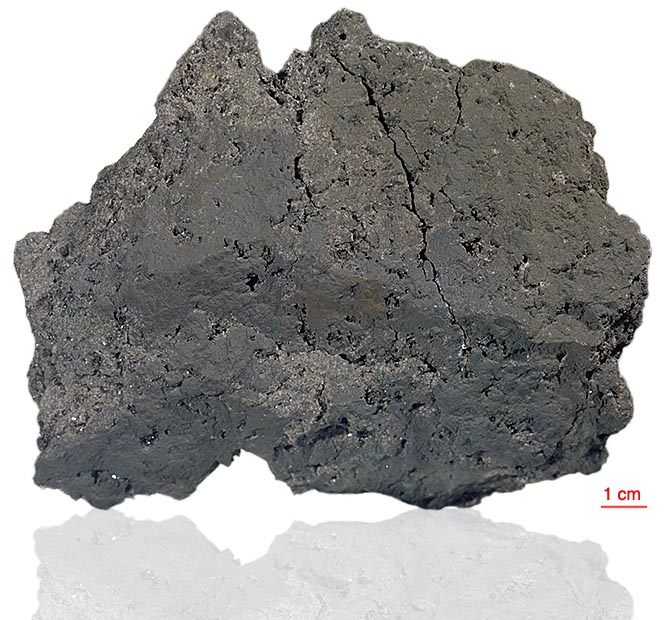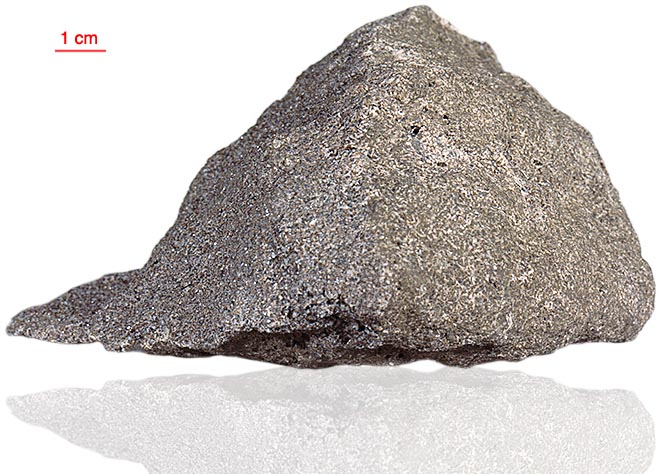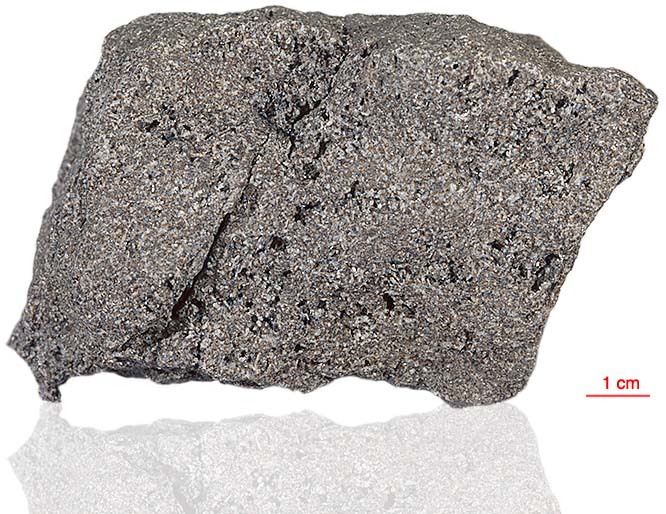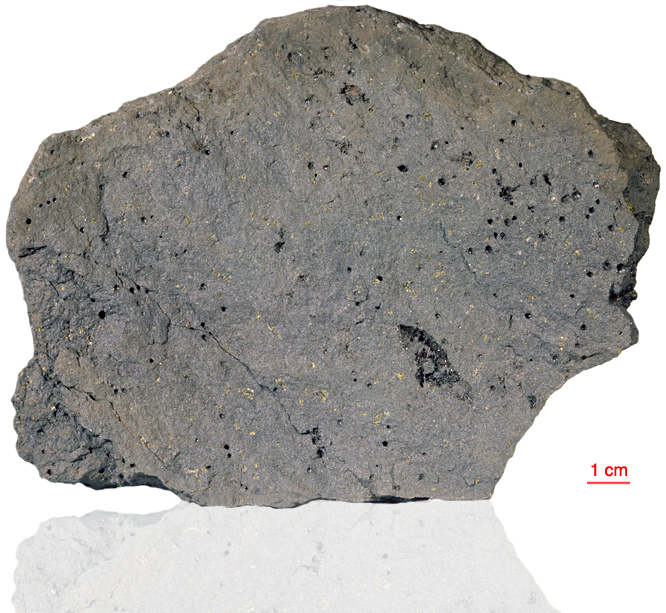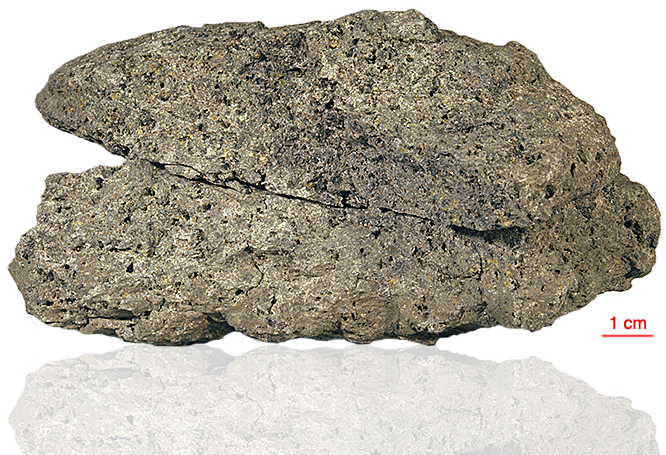78546 (15) Speckled Regolith Breccia
Collection:
Apollo 17
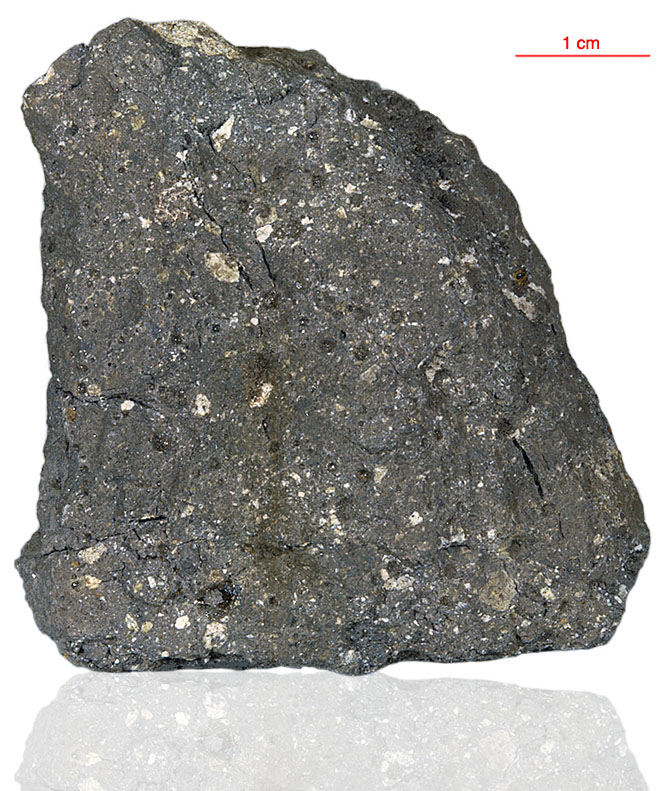
Click the microscope button to view a
thin section for this sample.
MicroscopeClick the microscope button to view a thin section for this sample.
MicroscopeFact sheet
78546 (15) Speckled Regolith Breccia
| 78546 is a coherent dark matrix regolith breccia that was collected as a rake sample. It has a speckled appearance with about 5% of small plagioclase clasts, set in a dark aphanitic matrix. The matrix is primarily dark brown glass and is lacking in void space. The clastic portion has seriate grain size and made up of minerals from mare basalt. It contains glass beads that were found to be poor in silica and sodium. Some glass is agglutinate. Rotation 1 shows two basaltic clasts, a glassy clast and a single orange glass bead. Rotation 2 shows a devitrified glassy clast and an anorthosite clast. The sample weighed 42.66 grams before analysis and has not been dated. Further details of this and other Apollo samples are here: http://curator.jsc.nasa.gov/lunar/ |
About this collection
Apollo 17, the final manned landing mission, had two objectives: to obtain samples of ancient rocks from the lunar highlands and to look for evidence of younger volcanic activity on the valley floor.
This small Collection contains material deriving from both periods, including igneous rocks around 4.3 billion years old from the lunar highlands as well as younger volcanic samples dating from about 3.6 billion years ago.
Apollo 17 was launched on 7 December 1972.

